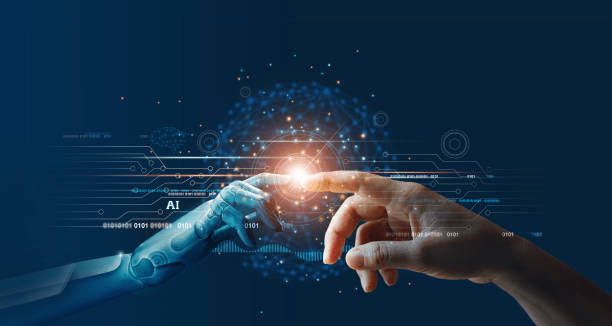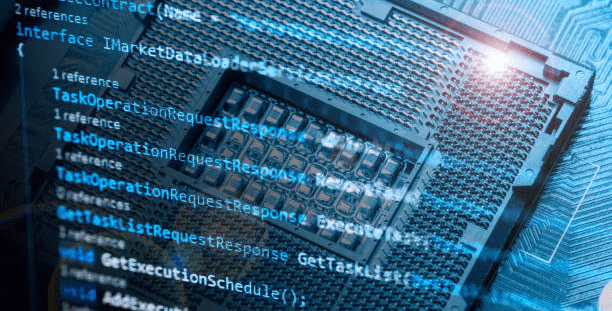In today’s fast-paced world, the integration of Artificial Intelligence (AI) into various facets of our lives has become inevitable. Particularly in the realm of education, AI innovations are paving the way for transformative changes, revolutionizing the traditional methods of teaching and learning. Let’s delve into the top 10 AI innovations that are shaping the future of education:
1. Natural Language Generation (NLG):
Natural Language Generation is a transformative technology that translates structured data into human-readable text, fostering automation in content creation for diverse platforms. This innovation significantly reduces human involvement by converting data into preferred formats such as charts and graphs. NLG serves as a bridge between struc
tured data and natural language, enabling seamless automation across various platforms. By transforming data into accessible formats, NLG enhances efficiency in data interpretation and dissemination, ultimately streamlining workflow processes.
 (image credit: istock)
(image credit: istock)
2. Speech Recognition:
Speech Recognition is a groundbreaking technology that converts spoken language into a format comprehensible by computers, revolutionizing human-computer interaction. This innovation enables seamless communication between users and machines, exemplified by virtual assistants like Siri on iPhones. By understanding and interpreting human speech, speech recognition facilitates a wide range of applications, from voice commands for hands-free operation to transcription services for improved accessibility.
Virtual assistants such as Siri showcase the practical implementation of speech recognition, enhancing user experience and accessibility across various contexts, including education. Through continuous advancements, speech recognition technology continues to refine its accuracy and efficiency, opening up possibilities for broader integration into everyday life and industry-specific applications.
3. Virtual Agents:
Virtual agents are computer applications designed to interact with humans, typically in the form of chatbots, facilitating various tasks such as customer service, task organization, and information provision. Notably, renowned virtual agents like Google Assistant and Amazon’s Alexa are prominent examples widely utilized across different domains. In education, virtual agents, especially in the form of chatbots, are gaining traction, serving purposes like information dissemination, task management, and customer support. These virtual agents enhance the learning experience by providing personalized assistance and real-time support to both students and educators. Their versatility and adaptability make them invaluable tools in modern educational settings, streamlining processes and enhancing accessibility to information and resources.
4. Decision Management:
Decision Management encompasses systems designed to convert and interpret data into predictive models, crucial for quick decision-making, risk mitigation, and process automation across multiple sectors. These systems utilize AI to analyze data, facilitating the generation of predictive models that empower rapid decision-making and risk avoidance. In the education sector, decision management tools play a pivotal role in various aspects, including curriculum planning, student performance analysis, and personalized learning recommendations. By leveraging data-driven insights, decision management enhances educational outcomes by tailoring learning experiences to individual needs, optimizing resource allocation, and fostering continuous improvement in teaching methodologies. These tools revolutionize education by empowering educators with actionable insights to make informed decisions that positively impact student learning and overall academic success.
 (image credit: istock)
(image credit: istock)
5. Biometrics:
Biometrics leverages deep learning algorithms, enabling computers to glean insights from sample data. Widely adopted in aerospace, military, healthcare, and beyond, it aids in tasks such as object identification and cancer detection. AI-powered biometrics, employing deep learning, identifies and verifies individuals through distinctive physiological characteristics. In educational contexts, biometrics heightens security, automates attendance management, and tailors learning journeys to individual preferences and behavioral nuances, fostering personalized educational experiences.
This technology underscores the intersection of advanced artificial intelligence and diverse fields, promising enhanced security and efficiency alongside personalized services.
6. Machine Learning:
Machine Learning (ML) revolutionizes data analysis by enabling machines to interpret vast datasets without explicit programming. This technology finds extensive applications across industries, facilitating tasks such as data analysis, customer preference prediction, and risk prevention. In educational institutions, ML algorithms empower administrators and educators to delve into large datasets, extracting actionable insights effortlessly.
ML aids in predicting student performance, identifying learning gaps, and personalizing instructional content to cater to individual needs. By enhancing the effectiveness and efficiency of teaching and learning processes, ML contributes significantly to educational advancement and student success.
7. Robotic Process Automation (RPA):
Robotic Process Automation (RPA) employs artificial intelligence (AI) to program software robots, enabling them to interpret, communicate, and analyze data autonomously. This technology revolutionizes workflow by automating mundane and rule-based manual tasks.
In educational settings, RPA harnesses AI capabilities to streamline administrative processes, such as grading assignments, managing student records, and optimizing resource allocation. By eliminating repetitive tasks, RPA empowers educators to allocate their time more efficiently, focusing on delivering high-quality teaching and personalized student support. This not only enhances administrative efficiency but also enriches the overall educational experience.
8. Peer-to-Peer Network:
A Peer-to-Peer (P2P) network establishes direct connections between systems and computers, enabling data sharing without reliance on a central server. Often associated with technologies like cryptocurrencies, P2P networks offer cost-effective and decentralized data transmission solutions. These networks foster decentralized data sharing and collaboration, empowering students, educators, and researchers to exchange knowledge and resources seamlessly.
In online learning platforms and collaborative research environments, P2P networks play a crucial role in facilitating peer-to-peer interactions, supporting efficient knowledge exchange and resource sharing among users. P2P networks embody a distributed architecture that promotes autonomy and resilience, ensuring robust data-sharing capabilities even without a central authority.
9. Deep Learning Platforms:
Deep Learning Platforms leverage artificial neural networks with multiple hidden layers to teach computers complex tasks like predictive analytics, object detection, and enhancing worker safety. By harnessing these networks, they excel in solving intricate problems and making data-driven predictions. In education, deep learning platforms enhance engagement and learning outcomes through adaptive learning systems, intelligent tutoring systems, and educational gaming applications. This technology revolutionizes teaching methodologies by personalizing learning experiences, adapting to individual student needs, and providing interactive educational tools. Deep learning platforms empower educators to deliver more effective and tailored instruction, fostering a more engaging and impactful learning environment.
 (mage credit: istock)
(mage credit: istock)
10. AI-Optimized Hardware:
AI-Optimized Hardware encompasses specialized components tailored to bolster AI software, such as CPUs, neural network-specific chips, and neuromorphic chips. Leaders in this sector, including Nvidia, Qualcomm, and AMD, cater to industries like healthcare and automotive. This hardware, finely tuned for AI tasks, significantly boosts the execution of intricate algorithms, elevating the efficiency of AI-powered applications.
In educational settings, AI-optimized hardware fuels immersive learning through virtual simulations and augmented reality, revolutionizing the educational landscape by enabling interactive experiences that enhance student engagement and stimulate innovation.
AI innovations are revolutionizing education by offering personalized learning experiences, optimizing administrative processes, and enhancing collaboration and engagement. As we embrace these technological advancements, educators and educational institutions must adapt and leverage AI tools to meet the evolving needs of learners in the digital age.

